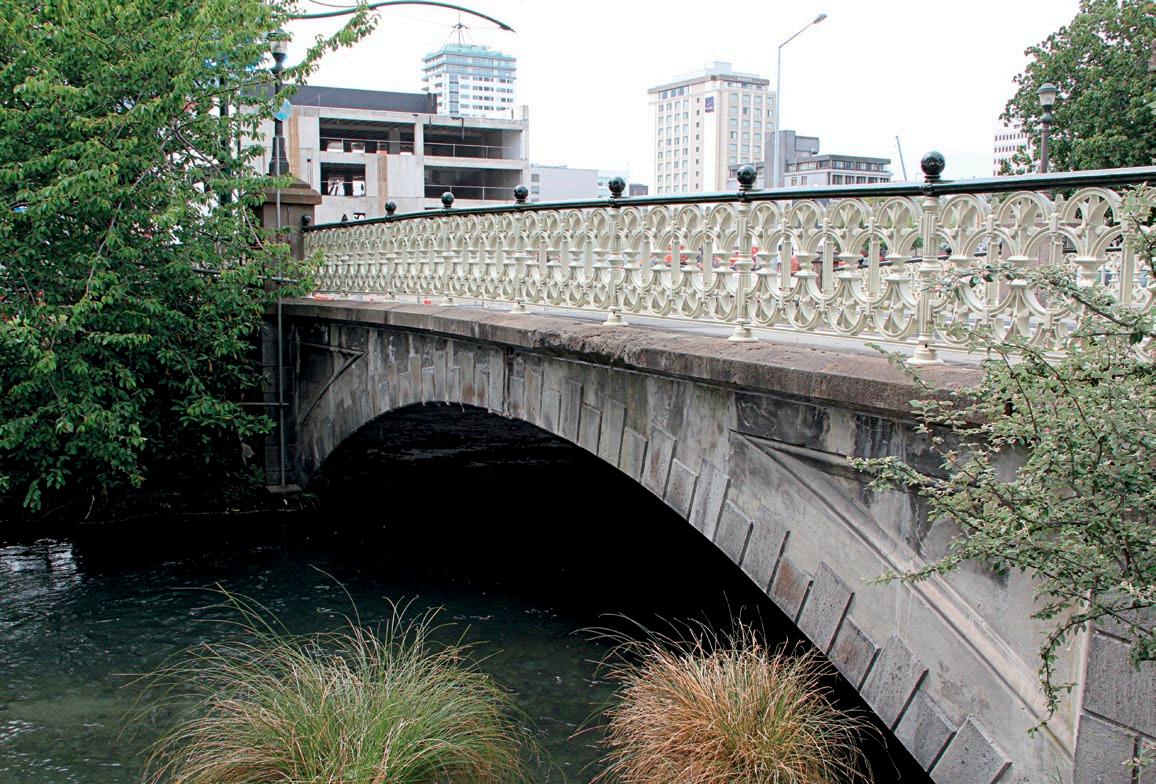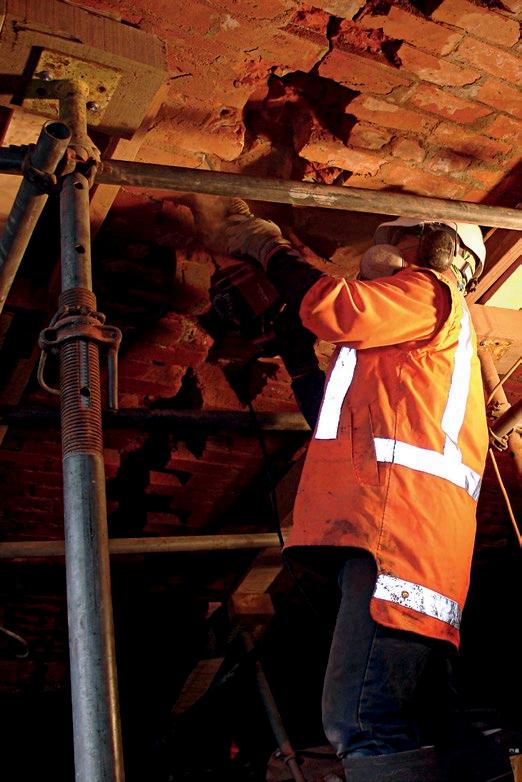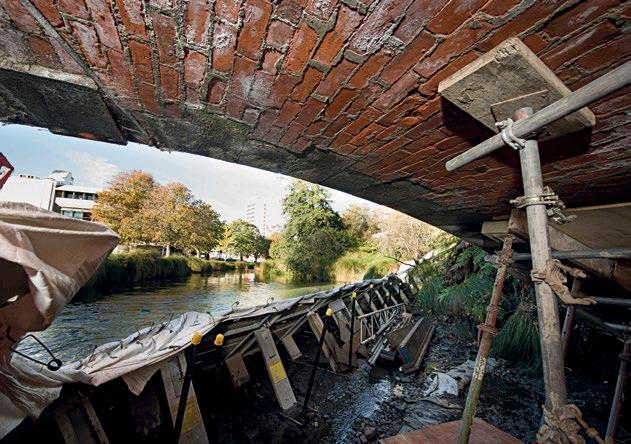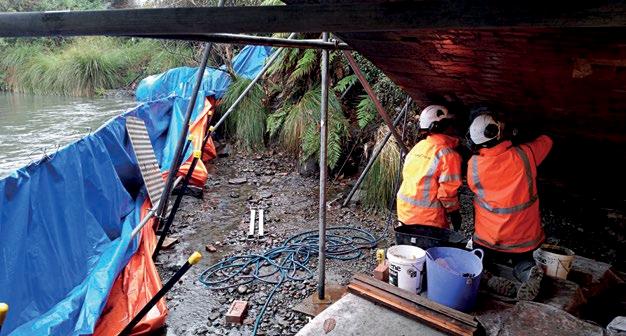
3 minute read
Downer New Zealand
Back to the future
with historic Christchurch bridge repair
Advertisement
Generations of people have enjoyed crossing over and punting under Christchurch’s historic Armagh Street Bridge. Thanks to Downer New Zealand’s sterling repair work, the bridge can now be enjoyed for many more years to come.
CATEGORY 1
PROJECT: Armagh Street Bridge Repairs, Christchurch CONTRACTOR: Downer New Zealand Afeature of the Christchurch cityscape since 1883, the arched Armagh Street Bridge suffered terrible damage in February 2011’s earthquake. Sadly, it was rendered impassable to pedestrians and vehicle traffic, including Christchurch’s famous tramway.
Most significantly, the earthquake caused yawning cracks on the brick ‘soffit’ (underside) of the bridge, as well as on its ‘extrados’ (outside arch). Approaches to the bridge and original cast iron balustrades also sustained damage.
Enter the bridge’s white knight – Downer New Zealand. Ably overseen by site engineer Tom Harding-Ilott, all repair works were undertaken by the Downer team under the Stronger Christchurch Infrastructure Rebuild Team (SCIRT) alliance.
Downer and a bevy of subcontractors got stuck into the repairs in March 2014. Core structural repairs saw a sophisticated method of crack stitching and cross pinning used. This involved the drilling of 12mm stainless steel threaded rods into the brick at a 45 degree angle. And 6mm stainless steel bars were installed in the bridge’s mortar joints to tie new brickwork into old. Rounding out the crack repairs was a specially blended, injected mixture of cementitious grout.
The work was not without its challenges. Chief among these



were the need to dam the Avon River to provide repair access; the need to source imperial bricks to match the bridge’s original materials; and dismantling and repairing cast iron balustrades that had remained untouched for 130 years.
The damming was environmentally challenging as the area of the Avon River spanned by the bridge is a trout spawning area. This was mitigated, however, thanks to close contact with Environment Canterbury.
Tom notes that the original bricks used for the bridge were in imperial measure and no longer in production. Downer overcame this by sourcing suitable replacements from an earthquake-damaged building (marked for demolition on nearby Colombo Street). Fortuitously, the bricks were exactly the same dimensions, colour and a good match for strength.
“The task of dismantling, cataloguing, repairing and reinstating the balustrade panels was extraordinarily fiddly,” he says. This was because each panel was interlinked with the next and fragile once load was removed. Add to this the fact that each panel was a whopping 250 kilograms.
As many of the repairs were being carried out on the underside of the bridge, a key health and safety risk was bricks and debris falling onto workers. To prevent this the Downer team developed an innovative propping structure, designed to support ‘a tonne of bricks’.
Undertaking the balustrade panel refurbishment also had numerous unknowns. There were no drawings of the panels and they hadn’t been altered since their installation in 1883. To ensure each piece went back into its exact position Downer generated a numbering system to keep track.
Other challenges Downer overcame included the safety of pedestrians, having to navigate two high voltage cables that crossed the bridge, coordinating works with other nearby rebuild projects and, of course, cold and inclement weather.
Because Armagh Street Bridge is a protected structure, extreme care needed to be taken to preserve its historical integrity. Downer’s understanding of the heritage expectations of the project was beyond compare, with one of the heritage consultants attached to the project describing it as among the best and most efficiently managed earthquake repair and conservation programmes she had ever worked on.
Impeccable planning saw the $526,000 project completed a whole two months ahead of schedule in November 2014.
The success of the Armagh Street Bridge repair was unquestionably down to Downer’s close collaboration with its stakeholders. As Tom describes it, “we went out of our way to ensure that all were understood, heard, kept informed and ultimately satisfied with Downer’s approach during these works”.
Ross Herrett of Christchurch City Council agrees, saying the project was an excellent example of collaboration that enabled the completion of a complex repair – on time, under budget, with a high quality result.
But this was so much more than just a bridge repair. Restoring Christchurch’s much-loved Armagh Street Bridge connection to the central business district and having the tramway recommence operation over its span was salve for a wounded city. l










